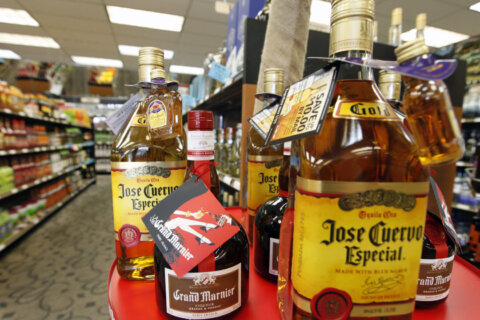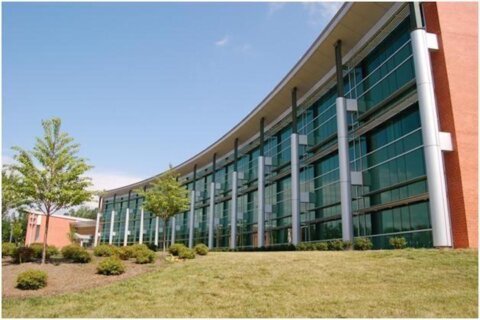This article was reprinted with permission from Virginia Mercury.
The Virginia General Assembly passed a measure three years ago allowing local governments to decrease roadway speed limits in their localities to as low as 15 mph. But recently, lawmakers found that the Virginia Department of Transportation denied seven of eight speed limit decrease requests, because, by state law, only the Commissioner of Highways can authorize changes on state-maintained roads.
Earlier this month, legislation advanced that would expand a locality’s speed-reducing authority to roadways within a business or residence district, including state-owned highways.
The number of requests represent a small fraction of the local governments in Virginia, including the 190 towns and 39 independent cities in the commonwealth, according to data from the U.S. Census. For the localities that are seeking to reduce speeding, though, the limits of the 2021 legislation are a challenge.
“Everybody can concede that there’s an issue here, but we have very little authority to do anything about it,” said Mayor Roger Vance, who represents the Town of Hillsboro, which was denied their request to lower the local speed limit to 20 mph last year.
The 2021 legislation did not extend localities’ speed reducing power to state-owned highways, which typically run through some towns like Middleburg and Hillsboro.
As proposed, the new bill would require local governments to conduct engineering and traffic studies as part of any effort to change the speed limit, post “lawfully placed” signs showing the reduced speed limit and notify the commissioner of the change.
The bill nearly failed in the Senate in February after Lt. Gov. Winsome Earle Sears split a tie vote, but it was reconsidered successfully and sent to Gov. Glenn Youngkin for approval.
Del. Betsy Carr, D-Richmond, the legislation’s sponsor, said she is working with the governor’s administration to ensure Youngkin signs her bill into law, but it could require an amendment.
Representatives from the Virginia Municipal League and Virginia Association of Counties, representing local governments in the commonwealth, said their members supported this bill.
“We firmly believe that this enhanced authority serves as an invaluable addition to our existing toolkit for implementing crucial safety measures,” said James Hutzler, government relations associate for VACO, in a statement. “With this legislation in place, counties will be empowered to take proactive steps towards safeguarding the well-being of our communities.”
Changing the speed limit
In Northern Virginia, the town of Leesburg is the only locality of at least three that submitted their studies and speed change requests to VDOT in February 2023. Leesburg was the only one allowed to adjust the speed limit to 20 mph.
“Speeding was most certainly a problem,” said Leesburg Mayor Kelly Burke.
She said residents are “extremely happy” with the change and feel much safer crossing high-traffic streets.
The police have also been enforcing the speed limit, she said, and the town has “found it to be a very useful tool.”
The towns of Middleburg and Hillsboro had different experiences when they sought to lower their speed limits from 25 to 20 mph. VDOT denied their requests last year.
The two mayors said that with the increased number of visitors and pedestrians in their towns, it’s essential for them to find thoughtful traffic solutions, which the 2021 legislation provided.
“The moment it got passed, we wanted to take advantage of it,” Middleburg Mayor Bridge Littleton said.
He said that because the town of Middleburg has seen an increase in visitors, the pedestrian traffic and on-street parking on Route 50 — a major thoroughfare in Loudoun County — raised leaders’ speeding and safety concerns.
When VDOT denied the April request, representatives from the agency visited Middleburg to meet with leaders and conduct a speed and safety assessment. Even so, the agency still didn’t approve the request because “a reduction of the posted speed limit will be an ineffective way to get more drivers to travel at safer speeds in this context,” the VDOT study stated.
Hillsboro completed a large infrastructure project in June 2021 that helped to calm traffic, reduce congestion and improve pedestrian safety on Route 9, which runs through the town.
Still, Vance said, the authority to lower the speed limit from 25 to 20 would have a “positive impact” on traffic and pedestrian safety and could help Hillsboro’s economic activity, but only if they are able to exercise their agency to do so.
Littleton agreed.
“Just giving us the authority to go ahead and lower by five miles an hour is not a big deal,” Littleton said. “Government is best when it’s closest to the people. So [the legislation] is putting more authority closer to the people to be able to manage the unique nature of their community.
Pedestrian fatalities still remain high
Pedestrian fatalities are higher in urban areas compared to rural areas of Virginia, according to data from the Virginia Department of Motor Vehicles.
According to the agency’s most recent data, in 2022,Virginia recorded 168 pedestrian-vehicle fatal crashes, compared to 124 in 2019.
“We have a road safety issue in this commonwealth, and it is in no small part due to a rise in speed-related crashes, which tend to be more fatal and more injurious,” said Mitchell Smiley, the Virginia Municipal League’s policy manager for transportation and natural resources.
In January, Secretary of Transportation Shep Miller said Virginia has some work to do regarding traffic crashes during a Senate Transportation committee hearing.
He said preliminary data from the Virginia Highway Safety Office, which is under the Department of Motor Vehicles, shows that highway fatalities were down 11% in 2023 compared to the previous year, the likely result of launching two statewide campaigns targeting speeding and distracted driving.
“While there’s still too many deaths on our highways, an 11% decrease is significant — and that bucks the national trend of increasing fatalities,” Miller said.
According to DMV’s data, 20% of the 122,434 crashes in the state last year were speed-related, a 1% increase over the previous year. Virginia Department of Transportation crash data also shows that between 2018 and 2022, the annual number of traffic fatalities increased from 819 to 1,005.
Miller added that while Virginia has had around 1,000 traffic fatalities every year, he projected that number will fall in the commonwealth this year following the decrease in highway fatalities. He said reinforcement of the state rules and commitment to improving road safety are keys to decreasing the number of deaths.
“1,000 people every year die on the highways in Virginia,” Miller said, “and think about what it would be like if three fully loaded passenger airplanes crashed into the fields in Virginia every year and killed 1,000 people. … What do you think we’d do? We’d do something very different and so that’s where we are.”







